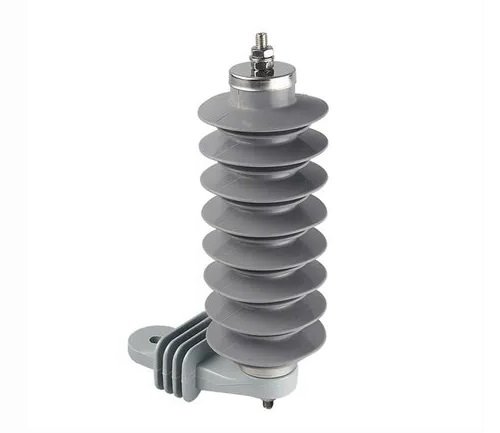What is a Lightning Arrester in substations and Why is it used?
A Lightning Arrester, also referred to as a surge arrester is a protective device designed to divert excessive lightning currents away from sensitive electrical equipment and structures. Its primary objective is to safeguard against the destructive consequences of lightning strikes, preventing damage to power lines, transformers, and other vital components of an electrical system.

The use of Lightning Arresters is imperative due to the unpredictable and potentially catastrophic nature of lightning strikes. When lightning occurs, it generates immense electrical energy that can travel through power lines and other conductive pathways, leading to electrical surges. These surges can damage or destroy electronic devices, appliances, and even entire electrical systems.
Unlike lightning rods used in residential and industrial settings, which are designed to intercept and safely ground the lightning strike, a substation LA operates differently. It remains “open” to the system voltage under normal operating conditions, meaning it does not conduct current to the earth. However, when a voltage surge occurs, the LA “closes”, becoming a low resistance path to the earth, thereby bypassing the surge voltage and protecting the substation equipment. This is particularly important in substations, as they are often connected to high voltage transmission lines, at the first point of entry into the substation. Since these lines are highly susceptible to lightning strikes, making the role of the LA in a substation critical for maintaining the reliability and safety of the power system.
Functions of Lightning Arresters
Diverting lightning currents: Lightning Arresters function by providing a low-impedance path for the lightning current to follow. This diversion prevents the electrical energy from flowing through the protected system, thus avoiding potential damage.
Absorbing and dissipating energy: Lightning Arresters are equipped with materials capable of absorbing and dissipating the energy generated during a lightning strike. This helps in reducing the impact of the surge on the connected electrical infrastructure.
Maintaining system integrity: By diverting lightning currents away from the system, Lightning Arresters contribute to maintaining the integrity of electrical networks, preventing downtime and costly repairs.
Lightning Arresters play a pivotal role in safeguarding electrical systems and structures from the destructive forces of lightning. Their ability to divert, absorb, and dissipate lightning currents ensures the reliability and longevity of power distribution networks, infrastructure, and various other applications.